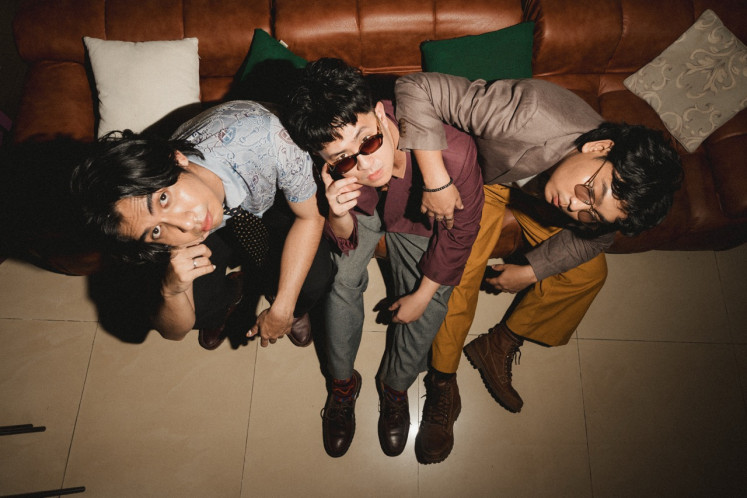Popular Reads
Top Results
Can't find what you're looking for?
View all search resultsPopular Reads
Top Results
Can't find what you're looking for?
View all search results3D printing brings ancient Yungang Grottoes to world
Change text size
Gift Premium Articles
to Anyone
W
ith 3D printing and high-fidelity digital technologies, the immovable Yungang Grottoes, the 1,500-year-old masterpieces of Chinese Buddhist art, took its first step out into the wider world.
The world's first mobile 3D-printed 1:1 replica cave of the Yungang Grottoes made its debut Friday at the Museum of Art and Archaeology in east China's Zhejiang Province. It was open to global visitors both offline and online.
"Entering the replica cave is like being in cave No. 12 of the Yungang Grottoes that stands more than 1,500 km away from here," said Lu Jiwen, deputy director of the Yungang Grottoes Research Institute.
Cave No. 12, also known as the Music Cave, was carved in the fifth century, with rich images of heavenly figures and musical instruments from home and abroad. These figures represented the earliest royal symphony orchestra in ancient China and played a vital role in the history of Chinese music and dance.
The Music Cave is 14 meters deep, 11 meters wide and 9 meters high. The replica accurately reproduced its shape, exquisite statues and the subtle traces brought by thousands of years of weathering to the grottoes.
The Yungang Grottoes, located in the city of Datong, north China's Shanxi Province, has 45 major caves and more than 59,000 stone statues. With a grotto complex stretching about 1 km from east to west, it is one of the largest ancient grottoes in the country.
Since August 2016, the Cultural Heritage Research Institute of Zhejiang University has cooperated with the Yungang Grottoes Research Institute to collect high-fidelity 3D digital data of cave No. 12.
Read also: Archaeological discoveries are happening faster than ever before
Diao Changyu, deputy dean of the cultural heritage research institute, said the joint project team has overcome technical difficulties such as data collection and processing, structural design, block printing and coloring for the replica.
"The statues were skillfully carved," said Diao. "In the digital acquisition and printing process of cave No. 12, the project team encountered new challenges and reached the 'ceiling' of existing technologies."
"The digital collection accuracy of the cave reached 0.03 mm and the final reproduction error of the cave is less than 2 mm," said Diao. "The colors were also replicated with more than 95 percent accuracy."
In order to give the replica a more realistic texture, the art team of the Yungang Grottoes used mineral pigments in line with ancient methods to color the replica grottoes over an area of about 900 square meters, which took about eight months.
"If you touch the 'rock wall' of the replica cave, you can even feel the texture of sandstone and limestone," said Diao.
The Music Cave reproduction used the "building block" method as the replica was assembled with 110 two-meter-long building blocks.
"These building blocks are made of light materials with a total weight of about 2 tonnes, which can be transported in eight standard container trucks," said Ning Bo, an official with the Yungang Grottoes Research Institute.
"It only takes one week to complete the assembly of the bricks," said Ning. "The huge grottoes are no longer immovable and people across the globe will have the chance to take a closer look at the delicate masterpieces."
After the exhibition in Hangzhou, capital of Zhejiang, the replica of the Music Cave will start a global tour.











